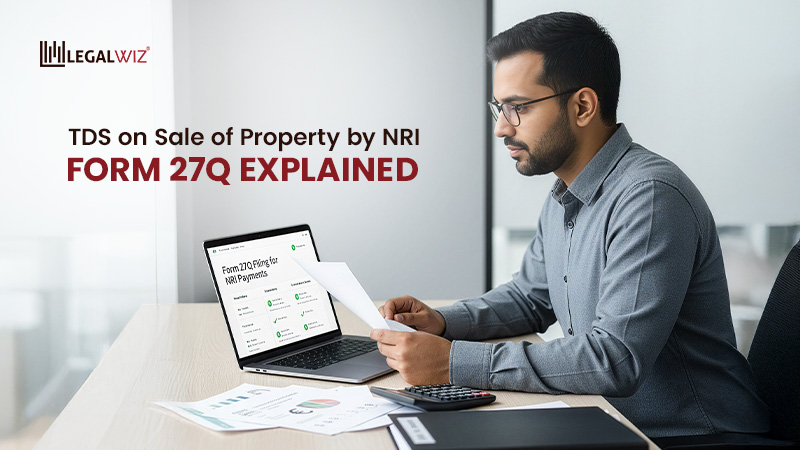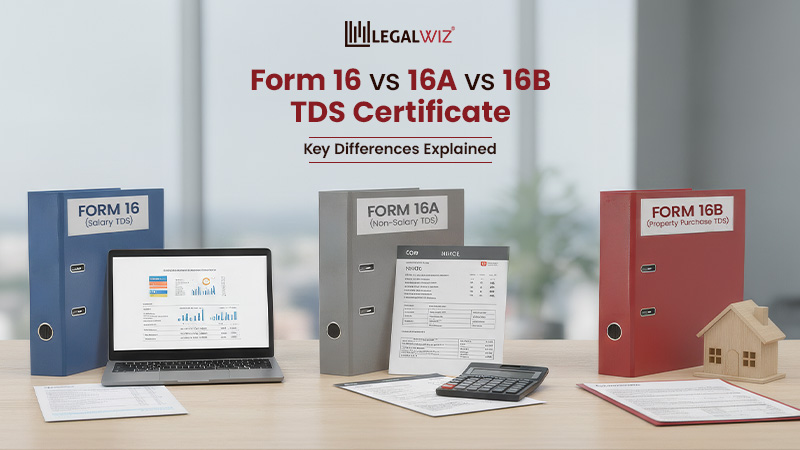What is PF and Types of Provident Fund?
There is no doubt that as you grow older, your physical and mental capabilities change. Besides, there is a mandatory retirement after you reach a certain age in all fields of work. However, life carries on even after the work stops. To maintain your lifestyle in that situation, you need to have certain saving plans in order. Employee Provident Fund (EPF) or PF is one such post-retirement savings fund that an employer and employee both contribute towards, during the course of employment. Introduced through the EPF scheme and legalized through the Employee Provident Funds and Miscellaneous Provisions Fund Act, 1953, the meaning of Provident Fund is one of the most easy ways to create a retirement corpus or an emergency fund for salaried employees. Through this blog, we will understand what is PF, types of provident fund in India and the benefits of the PF.
What is PF (Provident Fund) in India?
The term PF stands for Provident Fund. The most basic and simple meaning of PF is that it is a government approved scheme that allows employees to create savings for their long term financial planning. The most attractive feature of the concept of PF is that it is formed from the contribution of both the employer and its employee. Besides, employers can register themselves with the EPFO with the help of certified online service providers. Contact Us today to get your PF registration.
For an employer, being a part of the PF scheme, ie., registering under the PF scheme is mandatory if there are more than 20 employees engaged with the company. Whereas, for employees with an income less than 15,000/- per month, it is mandatory. For the other employees, it is voluntary to contribute to the provident fund.
What is PF contribution by employers?
The employers contribute 12% of the employees basic salary and dearness allowance. This contribution and EPF registration by employers become mandatory when the number of employees in an organization is more than 20.
Also Read: The Basics of HR Policy in India
What is a Provident Fund contribution by employees?
All salaried employees usually have an idea of the meaning of provident fund. Besides, considering the fact that PF forms the part of the employee’s CTC (Cost to Company). Just like the employers, an employee too, contributes 12% from the basic salary and dearness allowance as a part of EPF scheme. For all employees that earn less than INR 15,000/- in a month, the PF is mandatory. However, it is not mandatory if your salary is more than this amount.
Besides, since this is a really important mode of savings and retirement corpus for the employees, they can also voluntarily opt to increase the contribution as much as they want. However, this will not affect the employer’s contribution.
Important note: This rate of 12% contribution is subject to change based on the prevailing laws and notifications from the government of India.
What is the Employees Pension Scheme (EPS) in the Provident Fund?
EPS or the employee pension scheme is an integral and important part of the PF system in India. Part of the contributions made by the employer the provident fund becomes a part of the pension scheme. Below are some key features of the EPS contribution:
- The pension is a type of savings that helps in case of retirement or disability;
- An employer contributes to the EPS;
- An employee does not contribute;
- From the 12% of the employer, 8.33% is directed to the pension scheme;
- EPS deduction is mandatory for all employees that are covered under the EPF scheme; and
- A nominee can still access the funds under pension, in case of the demise of the employee.
Key components of the Provident Fund
For employees, it is very vital to think about the future savings. The Provident Funds is one of the easiest ways of “investing in the future” for employees. The following are the most integral features of PF:
Mandatory and Voluntary
Enrollment of an employee in the PF scheme can be either on a voluntary or mandatory basis. This depends on a lot of varied factors, including the salary of the employee, size of the company, etc.
Also Read: What is PF applicability in India
Contributions
As stated above, both the employer and employee need to contribute towards the proficient fund of the employee.
Funds for Emergency
Provident fund also acts like an emergency fund for the employee. Since the primary objective of PF is to accumulate funds. These funds can also come handy to employees in their times of emergency. The EPF Act provides for various circumstances under which an employee can apply for PF Withdrawal and use it in case of an emergency.
Interest on savings
The PF is not just an accumulation of the employer and employee contributions. It also gains interest over time. This rate of interest is decided by the government from time to time.
Tax Benefits
The contributions made towards provident funds are exempted from taxes. Besides, in certain cases, withdrawal of PF is also exempted from taxes. Hence, having PF enrollment also helps the employees in getting tax benefits. Also read: Benefits of PF.
Long Term Financial Security Plan
The intention of the provident fund is to provide a sense of security during the retirement. Hence, the PF is a part of a long term financial security plan that most people use post retirement for their medical expenses or leisure activities.
Government Regulated
This is also an attractive feature of the PF scheme. It makes trusting the entire process and contributing to the funds easy for the general public. Besides, it increases the faith of the employees.
Also Read: Terms and Conditions
Types of Provident Fund in India
In India, there are different types of provident fund. Each type of PF has its own structure and regulation. Let’s take a look at the different types of provident fund in detail:
Employees Provident Fund (EPF)
The EPF is the most commonly known and utilized type of provident fund in India. IN the organized business sector, this is a mandate for all companies where the number of employees exceeds 20. Here, the employee and employer contribute 12% each.
Public Provident Fund (PPF)
The PPF is an open PF scheme. Today, many skilled personnel are self-employed. The intention behind this is to help provide a government backed investment mechanism for the self-employed. However, PPF is also open to salaried employees, as well. It’s key features are:
- It is governed by the Public Provident Fund Act, 1968;
- PPF accounts have a maturity period of 15 years;
- The maturity period can be extended in blocks of five years;
- The nature of employment doesn’t matter to opt for PPF; and
- Lastly, the interest rate for PPF is usually higher than normal bank account savings.
Statutory Provident Fund
Statutory Provident Fund is the investment scheme specific for government employees, universities, educational institutions, etc. It is also known as the General Provident Fund (GPF). This scheme is governed by the Provident Funds Act, 1925. The key feature of this PF scheme is that it is specifically tailored for the following:
- Government officials;
- Certain Public sector organizations;
- Civil Services; and
- Defense services.
Private Sector Employees are not eligible to opt for this scheme.*
Recognised Provident Funds
The types of PF schemes that are recognised by the commissioner of Income Tax are “Recognised Provident Funds”. The schemes that fall under this type of provident funds, are usually subject to tax deductions and exemptions. Besides, a company may create the RPF under the provisions of the Provident Funds Act, 1952 or under a trust of a large enterprise. The key is that the commissioner of Income Tax must approve it.
Unrecognised Provident Funds
It is not necessary that the commissioner of Income Tax approves all the PF schemes that come across him. The schemes that he does not approve are “Unrecognised Provident Funds”. It is also a private provident fund. It only remains valid on the mutual consideration of the employer and employee.
Conclusion
To conclude, it is pretty evident how important the different types of provident funds are for the various employees in India. It is a long term financial savings mechanism, which acts like a retirement corpus or emergency funds. Besides, it is a type of scheme that involves employer and employee contributions. Hence, it is equally important for both to understand what is pf and the different types of provident funds in India to know which is the most suitable for them! If you face any confusion, the experts at legalwiz.in are just one click away. Connect with LegalWiz.in today!
Frequently Asked Questions
What is the difference between EPF and PPF?
EPF or employees provident fund is primarily tailored as a retirement plan for employees in the organised sector. Whereas, the Public Provident Fund (PPF) is open to all. It is beneficial for self-employed professionals and freelancers.
Is PF mandatory for employers in India?
For employers in the organised sectors, with more than 20 employees, registration with the EPFO and making PF contributions is mandatory under the Employees’ Provident Funds and Miscellaneous Provisions Act, 1952.
Why is PF important for employees?
Provident Fund is a government approved and regulated savings mechanism. Hence, it is safe and helps in planning for the retirement of an employee. Besides, the PF contributions also get an interest over the time before you withdraw it or it attains maturity.
What is EPF?
EPF stands for Employees’ Provident Funds. It is a specific provident fund applicable too organisations with more than 20 employees.
Is PF mandatory for all employees?
No, opting for the PF scheme is not mandatory for all employees. Usually, if your monthly wages/salary is less than Rs. 15,000/- then, PF scheme is mandatory for you.

Diksha Shastri
As a writer, Diksha aims to make complex legal subjects easier to comprehend for all. As a Lawyer, she assists startups with their legal and IPR drafting requirements. To understand and further spread awareness about the startup ecosystem is her motto.







